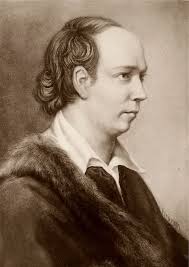Understanding the Term Transitional
The term transitional in literature refers to works, styles, or writers that bridge two distinct literary periods. These periods often include shifts in themes, tones, and literary techniques, often mirroring wider cultural, political, or philosophical shifts. For the late 18th century, this transition marked the movement from the Age of Enlightenment and Augustan literature—with its focus on reason, order, and social commentary—toward Romanticism, which emphasized emotion, individualism, nature, and a break from traditional forms.
18th-Century Poets and Writers Representing Transition
During the latter half of the 18th century, poets and writers began to show signs of disillusionment with the rationality and restraint of earlier Enlightenment ideals. This period saw the rise of what’s often called the Age of Sensibility or Pre-Romanticism. Writers like Thomas Gray, Oliver Goldsmith, William Cowper, and Robert Burns portrayed more introspective, emotional, and nature-focused themes in their work, anticipating the Romanticism of poets like Wordsworth and Coleridge.
For instance:
Thomas Gray explored mortalityand melancholy in Elegy Written in a Country Churchyard, a piece that combines Enlightenment ideals of reflection with emerging Romantic preoccupations like nature and the lives of ordinary people.William Cowper, known
for poems like The Task, brought a personal and emotional depth to his work that influenced later Romantic poets, especially in his descriptions of nature and the individual’s inner life.Oliver Goldsmith focused on rural and pastoral themes in works
such as The Deserted Village, mourning the decline of rural life and critiquing social inequality, which echoed the sentiments of sensibility and pre-Romantic nostalgia for simpler, rural settings.
These writers bridged the formal, decorous, and highly structured verse of the Augustan Age with a new emotional directness and an interest in ordinary life, rural landscapes, and human feeling that would become hallmarks of Romanticism.
Significant Characteristics of Transitional Works
Melancholy and Reflection on Mortality: A sense of melancholy pervades works like Gray’s Elegy, with a focus on the inevitability of death and the vanity of human endeavors, an idea foreshadowing Romantic meditations on time and the sublime.
Interest in Rural Life and Ordinary People: This era saw an increased empathy for the lives of common people. Works like Goldsmith’s The Deserted Village lamented the economic transformations that displaced rural communities.
Focus on Nature: Nature became a central theme, not just as a backdrop but as a source of emotional solace, introspection, and sometimes even spiritual reflection.
Experimentation with Forms: While these poets still worked within traditional forms, there was experimentation and a loosening of strict forms, allowing for greater expression of personal sentiment, which hinted at the Romantic style to come.
Analyzing “And all that beauty, all that wealth e'er gave, Awaits alike th' inevitable hour.”
These lines come from Thomas Gray’s Elegy Written in a Country Churchyard and express a somber reflection on death’s impartiality. The lines capture the inevitable fate that awaits all people, regardless of wealth or beauty, emphasizing the theme of mortality and the vanity of earthly achievements. This theme was central to many transitional works, serving as both a critique of social stratification and a humbling reminder of human limitations—a sentiment that resonated strongly with emerging Romantic ideals.
Robert Burns as the National Poet of Scotland
Robert Burns is celebrated as the National Poet of Scotland due to his distinct voice and dedication to Scottish identity, language, and culture. His use of the Scots language, his portrayal of rural Scottish life, and his empathy for the struggles of the common people have immortalized him as a symbol of Scottish heritage and pride. Poems like Auld Lang Syne and To a Mouse showcase Burns's ability to express universal human emotions while rooted in the particular landscape and cultural milieu of Scotland.
Language and Culture: Burns wrote in the Scots dialect, preserving and celebrating the Scottish vernacular at a time when English culture dominated the British Isles.
Empathy for the Common Man: Many of Burns’s poems highlight the struggles and joys of ordinary people, aligning him with the Age of Sensibility’s focus on empathy and emotional expression.
Timeless Themes: Through themes of love, freedom, and friendship, Burns’s work transcends time and place, speaking to a broad audience while remaining distinctly Scottish.
Conclusion: The Transition to Romanticism
The later 18th century was a pivotal period that set the stage for Romanticism’s arrival. As poets and writers increasingly explored themes of emotion, nature, and personal experience, they broke away from the rationality and order that defined the Enlightenment. These transitional writers, with their focus on nature, mortality, and human connection, represent a literary shift that reshaped Western literature and opened the door to Romanticism’s full embrace of subjectivity and imagination.
This outline and analysis should provide a thorough foundation for your essay on the transitional qualities of late 18th-century literature, incorporating the importance of figures like Gray and Burns and highlighting the characteristics that bridged one literary age to the next. Let me know if you'd like additional details on any particular section.














No comments:
Post a Comment